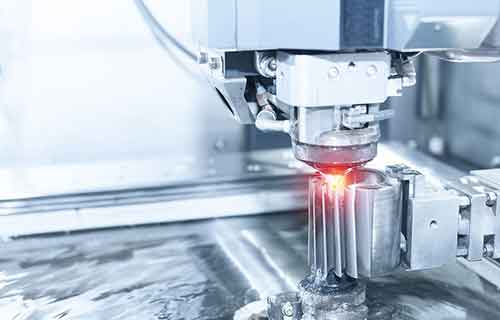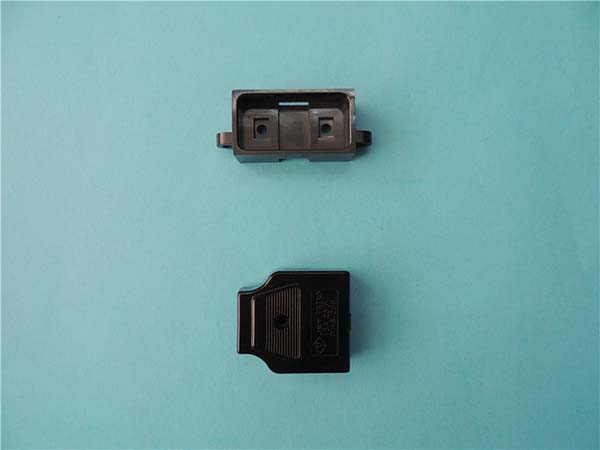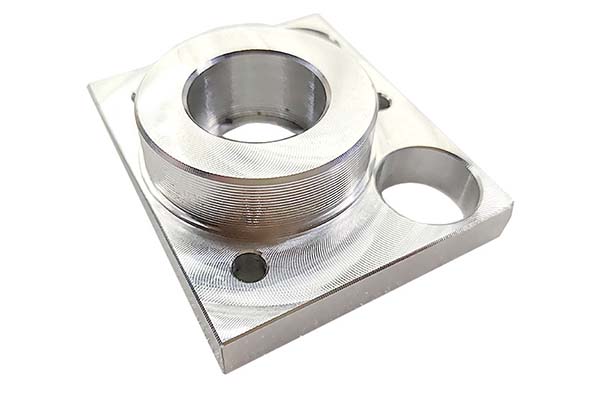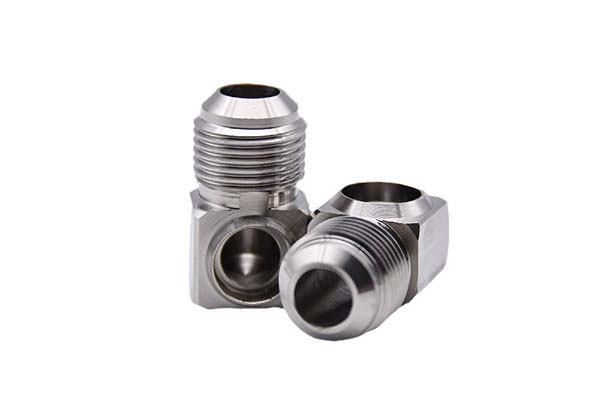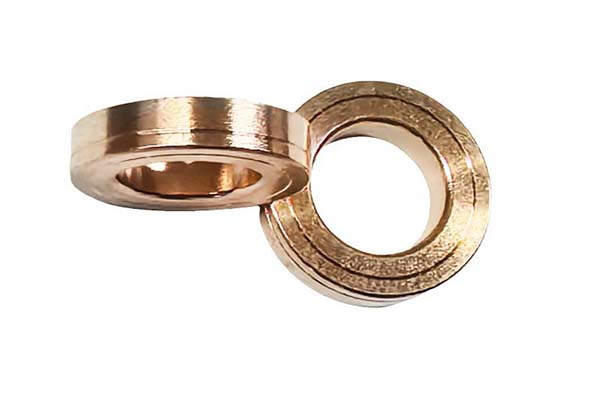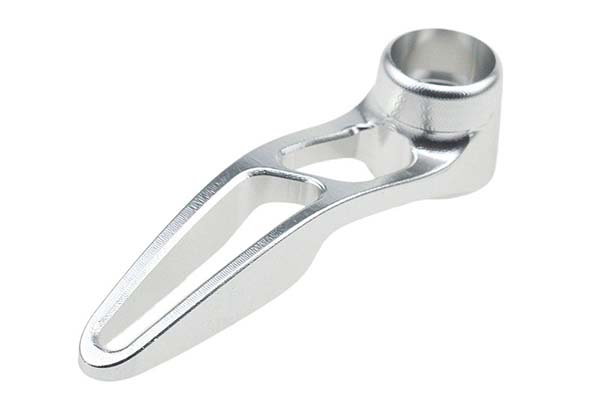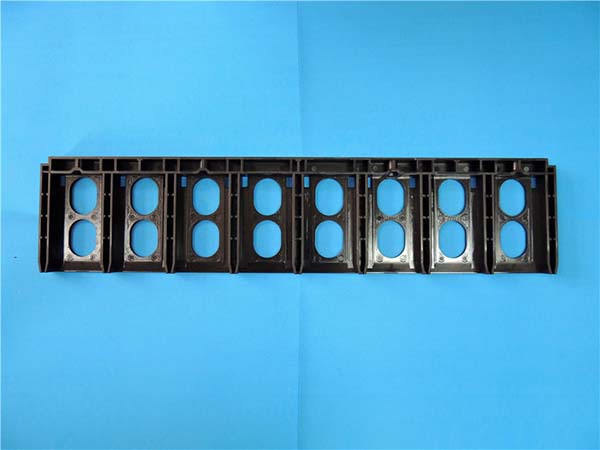Introduction
In the realm of precision engineering, Brass Turning Components have emerged as the cornerstone of high - performance mechanical systems. These components, crafted through the intricate process of brass turning, play a vital role in ensuring the smooth operation and high - precision functionality of various devices across multiple industries. From the automotive and aerospace sectors to electronics and medical equipment, the influence of brass turning components is far - reaching.
Brass, an alloy primarily composed of copper and zinc, offers a unique combination of properties that make it an ideal material for precision turning. Its excellent machinability allows for the creation of complex shapes and tight tolerances, while its corrosion resistance, electrical conductivity, and thermal stability ensure the durability and reliable performance of the finished components. As precision engineering continues to push the boundaries of what is possible, brass turning components are at the forefront, driving innovation and enabling the development of cutting - edge technologies. This article delves deep into the world of brass turning components, exploring their manufacturing processes, applications, and the ways in which they are revolutionizing precision engineering.
What are Brass Turning Components
Definition and Manufacturing Process
Brass turning components are precision - engineered parts produced through the metal turning process, where a brass workpiece is rotated on a lathe while cutting tools remove material to achieve the desired shape and dimensions. This subtractive manufacturing method allows for the creation of components with high accuracy and smooth surface finishes.
The turning process begins with a solid brass rod, bar, or tube, which is clamped onto the spindle of a lathe. As the spindle rotates the workpiece at high speeds, typically ranging from a few hundred to several thousand revolutions per minute (RPM), a stationary cutting tool is fed into the rotating brass. The cutting tool, made of materials such as high - speed steel, carbide, or diamond - coated inserts, shears off small chips of brass, gradually shaping the workpiece.
Modern lathes can be classified into two main types: manual lathes and computer - numerical - control (CNC) lathes. Manual lathes require an operator to manually control the movement of the cutting tool using hand wheels and levers. This method demands a high level of skill and experience from the operator, as they must precisely adjust the tool's position and feed rate to achieve the desired dimensions. In contrast, CNC lathes are automated machines programmed with detailed instructions on the component's design. These instructions, typically in the form of G - code, control the movement of the cutting tool along multiple axes (usually X, Y, and Z), enabling the production of complex and highly accurate parts with minimal operator intervention. For Yigu Technology example, a CNC lathe can achieve tolerances as tight as ±0.001 inches (±0.0254 mm) in the production of brass turning components, making it ideal for high - precision applications.
Material Properties of Brass
Brass, an alloy of copper and zinc, offers a unique set of properties that make it highly suitable for precision engineering applications in the form of turning components.
Excellent Machinability: One of the most significant advantages of brass is its outstanding machinability. The presence of zinc in the alloy reduces the hardness of copper, making it easier for cutting tools to remove material during the turning process. This results in faster cutting speeds, longer tool life, and lower production costs. For instance, when compared to stainless steel, brass can be machined at approximately 2 - 3 times the cutting speed, allowing manufacturers to produce components more efficiently. The smooth chip formation during machining also contributes to better surface finishes, with brass components often achieving a surface roughness of Ra 0.8 - 1.6 µm (micrometers) without additional finishing operations.
Corrosion Resistance: Brass exhibits good corrosion resistance, especially in environments with moderate humidity and low levels of aggressive chemicals. The copper in brass forms a thin, protective oxide layer on the surface when exposed to air, which helps prevent further oxidation and corrosion. This property makes brass turning components suitable for applications in outdoor equipment, plumbing systems, and marine environments. For Yigu Technology example, brass fittings are commonly used in water supply systems due to their ability to resist corrosion from water and prevent the leaching of harmful metals into the water.
Electrical Conductivity: Brass is a good conductor of electricity, although its conductivity is lower than that of pure copper. This property, combined with its machinability and corrosion resistance, makes it useful in electrical and electronic applications. Brass components are often used in electrical connectors, switches, and relays, where they provide reliable electrical contact while being able to withstand the mechanical and environmental stresses of the application. For example, in a typical household electrical switch, brass contacts are used to ensure a stable electrical connection and long - term reliability.
Mechanical Strength: Brass offers a reasonable balance of mechanical strength and ductility. The addition of zinc to copper increases the alloy's strength and hardness, making it suitable for applications that require components to withstand mechanical loads. At the same time, brass remains ductile enough to be easily formed into complex shapes during the turning process. The mechanical properties of brass can be further adjusted by varying the ratio of copper and zinc in the alloy. For example, a brass alloy with a higher zinc content (up to 40%) will have increased strength and hardness, but reduced ductility, while a lower - zinc - content brass (around 20 - 30% zinc) will offer better formability and corrosion resistance.
The Role of Brass Turning Components in Precision Engineering
High - Precision Machining Capabilities
Brass turning components are renowned for their high - precision machining capabilities, which are crucial in precision engineering. The excellent machinability of brass allows for the production of components with extremely tight tolerances. In general, modern CNC lathes can achieve tolerances as close as ±0.0005 inches (±0.0127 mm) when turning brass components. This level of precision is far beyond what can be achieved with many other materials using traditional machining methods.
For Yigu Technology example, in the production of small - diameter shafts for high - speed motors, the diameter tolerance requirements may be as tight as ±0.001 inches. Brass, with its favorable machining properties, can easily meet these strict requirements. When compared to aluminum, which may experience more significant dimensional variations during machining due to its relatively soft nature and high thermal expansion coefficient, brass offers more stable machining performance. Aluminum components might have a typical tolerance range of ±0.002 - ±0.005 inches in similar high - precision turning operations, showing that brass provides a clear advantage in achieving tighter tolerances.
The ability to maintain such high precision in brass turning components is not only due to the material itself but also the advanced machining techniques and equipment used. CNC lathes are equipped with high - resolution encoders and advanced control systems that can precisely monitor and adjust the cutting process. This ensures that the final dimensions of the brass components are consistent and accurate, making them suitable for applications where even the slightest deviation can lead to performance issues, such as in optical instruments and high - precision measuring devices.
Complex Geometric Shapes
Another remarkable aspect of brass turning components is their ability to be machined into complex geometric shapes. The plasticity and workability of brass enable manufacturers to create components with intricate designs that are difficult to achieve with other materials.
In the aerospace industry, brass turning components are used to manufacture fuel nozzles with complex internal channels and precise orifice diameters. These nozzles require a high - degree of geometric accuracy to ensure the proper atomization of fuel, which is essential for efficient engine combustion. The internal channels of these nozzles can be designed with curved and angled shapes, and brass can be machined to form these complex geometries with the required smoothness and dimensional accuracy.
In the medical equipment field, brass is often turned into components for surgical instruments. For instance, the jaws of a precision - grasping surgical instrument may have a unique, multi - faceted shape to provide better grip and control during delicate procedures. Brass can be machined to create these complex shapes, and its corrosion - resistance properties also ensure the long - term reliability and sterility of the instrument. Additionally, in the production of implantable medical devices, such as certain types of orthopedic implants, brass components with customized shapes can be fabricated to fit the patient's anatomy precisely. The ability to create complex geometric shapes in brass turning components allows for the development of innovative medical solutions that can improve patient outcomes.
Applications in Different Industries
Aerospace Industry
In the aerospace industry, the demand for high - performance materials and components is unrelenting. Brass turning components play a critical role in this high - tech sector, contributing to the safety, efficiency, and reliability of aircraft and spacecraft.
One of the primary applications of brass turning components in aerospace is in aircraft engines. Components such as fuel nozzles, bearing housings, and valve seats are often made from brass. Fuel nozzles, for Yigu Technology example, require precise internal geometries to ensure the accurate and efficient atomization of fuel. Brass can be turned to create nozzles with extremely tight tolerances, typically within ±0.002 inches, ensuring that the fuel is evenly distributed for optimal combustion. This not only improves engine performance but also reduces fuel consumption and emissions.
In aerospace electronics, brass turning components are used in connectors, switches, and heat sinks. The high - frequency connectors in avionics systems need to have excellent electrical conductivity and mechanical stability. Brass connectors can provide reliable electrical connections, with a conductivity of around 28 - 35% IACS (International Annealed Copper Standard), ensuring the seamless transmission of signals between different electronic components. Additionally, brass heat sinks are used to dissipate heat generated by high - power electronics. Their good thermal conductivity, approximately 110 - 130 W/(m·K), helps to maintain the optimal operating temperature of the electronic devices, preventing overheating and potential malfunctions.
Medical Field
The medical field places stringent requirements on the materials used in its equipment, with a focus on biocompatibility, corrosion resistance, and high precision. Brass turning components meet these requirements and are thus widely used in various medical applications.
In surgical instruments, brass is often used to make components such as forceps, clamps, and scalpel handles. The machinability of brass allows for the creation of complex shapes, such as the serrated jaws of forceps, which require a high level of precision to provide a secure grip during surgical procedures. Brass components in surgical instruments also offer good corrosion resistance, which is crucial as these instruments are frequently exposed to sterilization processes and body fluids. For example, brass forceps can maintain their integrity and functionality even after multiple autoclaving cycles, ensuring the safety and effectiveness of surgical operations.
In medical diagnostic equipment, brass turning components are used in components such as sample holders, fluid connectors, and micro - valves. In a high - precision blood analyzer, the sample holder needs to be machined with extreme accuracy to ensure the proper positioning of blood samples for analysis. Brass, with its ability to achieve tight tolerances of up to ±0.0005 inches, can be turned into sample holders that meet these strict requirements. Additionally, the biocompatibility of brass makes it suitable for use in components that come into contact with biological samples, as it does not leach harmful substances into the samples, ensuring accurate test results.
Electronics Industry
The electronics industry is another major consumer of brass turning components, leveraging the material's excellent electrical conductivity and good machinability.
Electrical connectors are one of the most common applications of brass in the electronics industry. Brass is used to make connectors for a wide range of electronic devices, from smartphones and laptops to industrial control systems. For example, in a typical USB connector, the contact pins are often made of brass. Brass offers a good balance between electrical conductivity and mechanical durability. Its conductivity allows for the efficient transfer of electrical signals, with a low resistance that ensures minimal signal loss. At the same time, its mechanical properties enable the pins to maintain their shape and contact integrity even after repeated insertions and removals. A well - designed brass - based USB connector can withstand thousands of mating cycles without significant degradation in performance.
Heat sinks are also an important application of brass turning components in electronics. As electronic devices continue to become smaller and more powerful, effective heat dissipation becomes crucial. Brass, with its relatively high thermal conductivity, is an ideal material for heat sinks. In a high - performance computer graphics card, a brass heat sink can be designed with complex fin structures through the turning process. These fins increase the surface area available for heat transfer, allowing the heat generated by the graphics processing unit (GPU) to be dissipated more efficiently. By effectively managing heat, brass heat sinks help to improve the performance and lifespan of electronic components, ensuring the stable operation of the overall device.
FAQs
Q1: What are the common quality issues in brass turning components production and how to solve them?
One common quality issue in brass turning components production is surface roughness. This can be caused by factors such as inappropriate cutting speeds, dull cutting tools, or vibrations during the turning process. When the cutting speed is too low, the brass material may not be removed smoothly, resulting in a rough surface. Dull cutting tools also struggle to make clean cuts, leaving behind irregularities. Vibrations can cause the cutting tool to deviate from its intended path, creating uneven surfaces.
To solve this problem, it is crucial to optimize the cutting parameters. For example, increasing the cutting speed within the recommended range for brass can improve chip formation and surface finish. A cutting speed of around 200 - 300 meters per minute is often suitable for brass turning. Regularly replacing cutting tools when they show signs of wear can also prevent surface roughness. Additionally, ensuring proper machine setup and stability, such as using vibration - damping fixtures, can minimize vibrations during the turning process.
Another issue is dimensional deviation. This can occur due to thermal expansion of the brass workpiece during machining, incorrect tool setting, or inaccuracies in the CNC programming. Brass has a relatively high coefficient of thermal expansion, so as the temperature rises during machining, the workpiece can expand, leading to larger dimensions than intended. Incorrect tool setting means that the cutting tool may not be positioned precisely, resulting in over - or under - cutting. Errors in the CNC program can also cause the tool to move in the wrong path, leading to dimensional errors.
To address dimensional deviation, coolant should be used effectively to control the temperature of the workpiece during machining. This helps to minimize thermal expansion. Double - checking and calibrating the tool setting before starting production is essential. For CNC - programmed machining, rigorous program verification and simulation can be carried out to ensure the accuracy of the tool path. Regularly measuring the dimensions of the produced components during the production process and making timely adjustments can also help to keep the dimensions within the required tolerances.
Q2: How to choose the right brass alloy for different precision engineering applications?
When choosing a brass alloy for precision engineering applications, several factors need to be considered. Strength is an important factor. For applications that require components to withstand high mechanical loads, such as gears or structural parts in machinery, a brass alloy with a higher zinc content (around 35 - 40%) can be chosen. This type of brass alloy, like C36000 (also known as free - machining brass), offers increased strength and hardness. Its tensile strength can reach up to 400 - 500 MPa, making it suitable for applications where durability under stress is crucial.
Corrosion resistance is another key consideration. In applications where the components will be exposed to moisture, chemicals, or harsh environments, such as marine equipment or plumbing fittings, a brass alloy with better corrosion - resistance properties should be selected. Alloys with a lower zinc content, around 20 - 30%, often have better corrosion resistance. For example, C26000 (cartridge brass) is commonly used in plumbing due to its good resistance to corrosion from water and its ability to maintain its integrity over time.
Conductivity is also a vital factor, especially for applications in electrical and electronic devices. If high electrical conductivity is required, such as in electrical connectors or components in power - transmission systems, a brass alloy with a relatively high copper content should be chosen. Alloys with a lower zinc content generally have better electrical conductivity. For instance, C22000 (commercial bronze) has a relatively high copper content, which gives it good electrical conductivity, making it suitable for applications where efficient electrical signal transmission is necessary.

